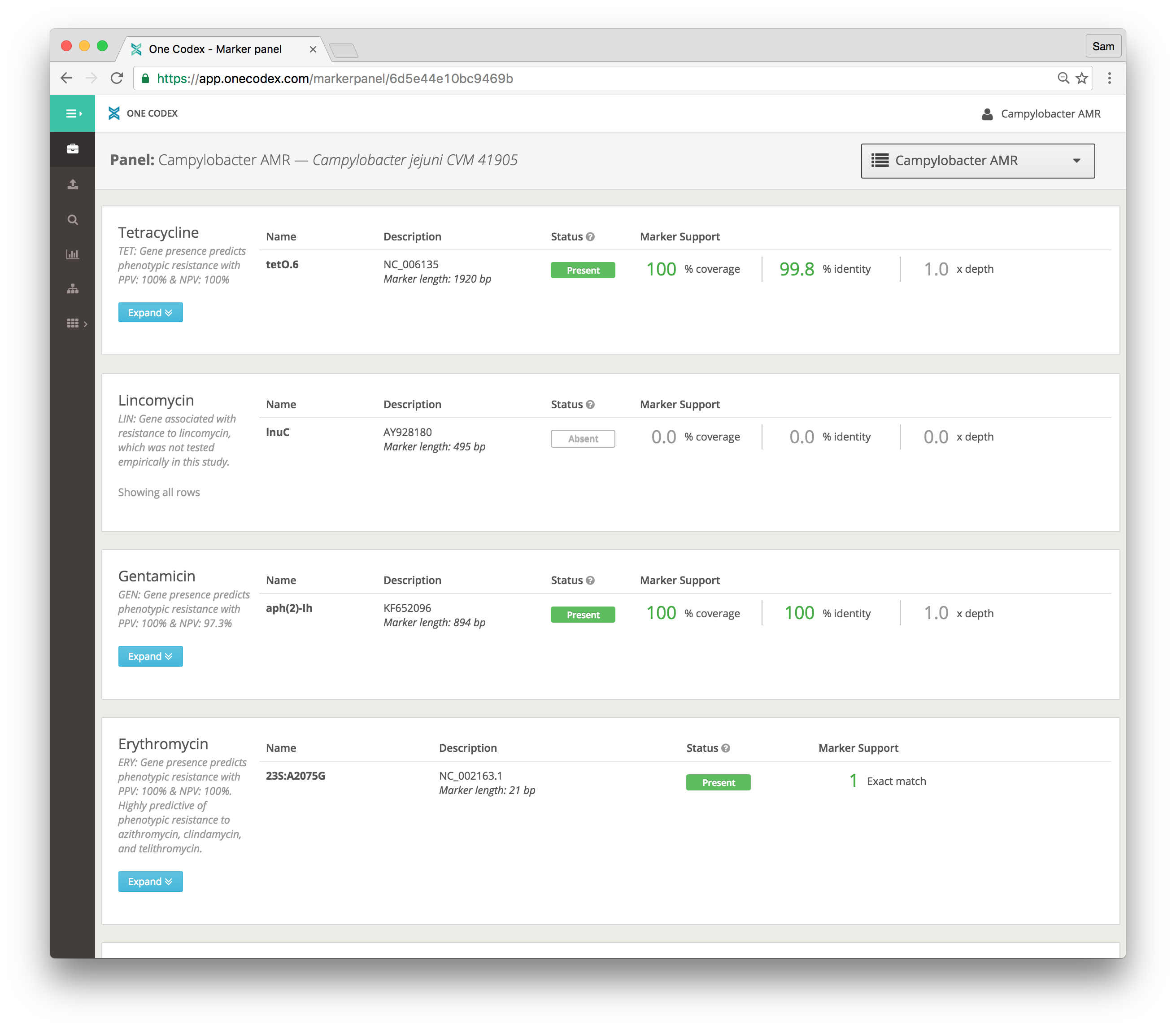Detecting Antimicrobial Resistance in Foodborne Pathogens
Today we’d like to tell you about a set of panels on One Codex designed to help detect antimicrobial resistance (AMR) in two important foodborne pathogens – Escherichia coli and Campylobacter coli / C. jejuni.
AMR in E. coli and Campylobacter coli / C. jejuni
Antibiotic resistant infections are a huge challenge for modern healthcare, and there is a global effort underway to improve our identification and treatment of these hardy infections. Both E. coli and C. coli / C. jejuni are dangerous foodborne pathogens that can be highly resistant to antibiotics. These panels are designed to help microbiologists use genomic sequencing to track the spread of foodborne illness, and predict what antibiotics may not be effective for treating these pathogens.
Below is an example of a C. jejuni isolate carrying multiple resistance genes (link to assembly):

Panels for detecting AMR genes
Genomic prediction of antibiotic resistance requires thorough experimental validation, and a group of researchers led by scientists at the US FDA and CDC tested dozens of E. coli (n=76)1 and C. jejuni / C. coli (n=114)2 isolates in order to find genetic signatures that can be used to predict resistance to a variety of common antibiotics. In those experiments, they were able to predict the antibiotic resistance phenotype with an accuracy of 95-100%.
Using those genetic markers we built two analytical modules, one for E. coli and one for C. jejuni / C. coli. For each, resistance genes and mutations are grouped by antibiotic, with the positive predictive value (PPV) and negative predictive value (NPV) calculated from the published empirical resistance testing. For all empirically tested antibiotics, the presence of a single marker with the “Present” status is predictive of resistance. In some cases these are single genes or markers, while in others multiple alleles may be listed.
Organism-specific analysis with functional gene panels
These are the just the most recent examples of our ongoing work building and deploying targeted panels to address specific analytical needs (e.g., detecting Shiga-toxin producing E. coli (STEC) in food or Bacillus anthracis in complex environmental samples).3 If you have an organism or application that you think may benefit from a gene-oriented analysis, please be in touch!
Running the panels
Similar to other specialized analyses on One Codex, these panels can be set to run automatically for paid platform accounts. We’re also happy to run them on an ad hoc basis for your samples (just send us a note). Our hope is that these panels will help microbiologists track the spread of foodborne illness and contribute to the fight against the spread of antibiotic resistant infections.
– Sam
1 Tyson, et al. J Antimicrob Chemother. 2015 Oct; 70(10):2763-9. doi: 10.1093/jac/dkv186 2 Zhao, et al. Appl Environ Microbiol. 2016 Jan; 82(2):459-66. doi: 10.1128/AEM.02873-15 3 Lambert, et al. PLoS One. 2015 Apr; 10(4):e0122928. doi: 10.1371/journal.pone.0122928